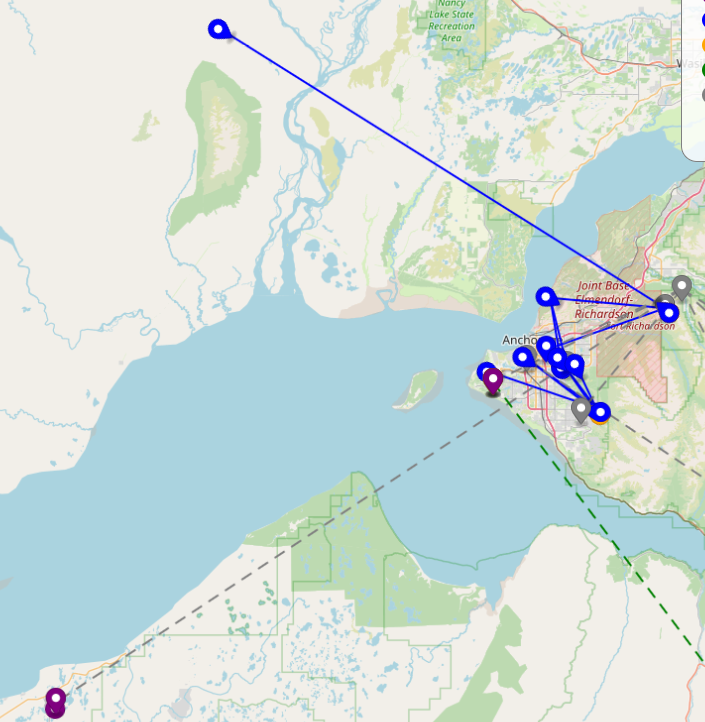AREDN Mesh 5.8 GHz Sector Antenna Added at Site Summit
A 5.8 GHz Mikrotik MANT19S 120-degree sector antenna has been added to the AREDN Mesh arsenal at Site Summit late last week. It is bore-sited to 310 degrees with 120 degrees of coverage so it should cover much of anchorage and the Wasilla area, similar to the 3.4 GHz node already installed at the site. We are hopeful that it will have a similar range, including the ability to link to Yetna like the 3.4 GHz node (a 49-mile link).
There is a wide variety of gear available for use on AREDN on 5.8 GHz. See the AREDN page here to see what gear can indeed work:
https://www.arednmesh.org/content/supported-devices-0
We’ve found the Mesh excpetionally useful for many purposes including:
- VOIP Phones / PBX
- Linking Winlink RMS stations to a single “Post Office” – VERY IMPORTANT
- Chat Services
- File Server
- DMR Repeater Link
- APRS I-Gate
The Anchorage AREDN Mesh Network basically covers Anchorage and definitely has coverage to the MatSu area (We’ve tested it from there). Unfortunately, no MatSu stations have yet to connect to the system. We believe it to be possible to link to the Kenai Peninsula (certainly to Nikiski), but it may be also possible to link all the way into the Kenai/Soldotna area.
If you live in Anchorage and can get line-of-site to the South Anchorage Hillside, Site Summit, R1 North (EARS Club Station on Elmendorf), Providence Hospital, or Alaska Native Medical Center, it is likely you could connect to the area’s Mesh network if you have the right gear (it’s pretty inexpensive compare to amateur radio gear). As a comparison, to install a simple 1200 baud amateur packet station would include the costs of a power supply, radio, tnc (or sound card), feed line, and antenna (let’s say likely in the $200 – $250 range to be really conservative). You can acquire new gear to use on the mesh, in some cases, for under $100 (these units come with their own power supplies…you have to add the Cat 5/6 cable). If you don’t have line of site to one of our existing node, we can even open a “tunnel” connection to something like a Mikrotik HAP (lite, AC2, or AC3) unit.
5.8 MHz Sectors are to also be installed at the EARS club station and at our Hillside South side in the near future to help with our transition from 3.4 GHz to 5.8 GHz.
If you’d like to learn more about the Mesh and how to get started, drop a note to mesh@kl7aa.org.
73,
Kent, KL5T


